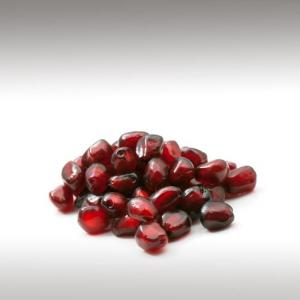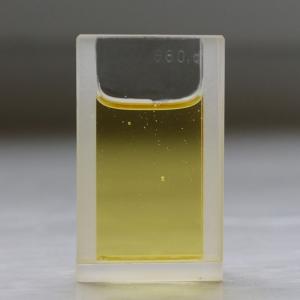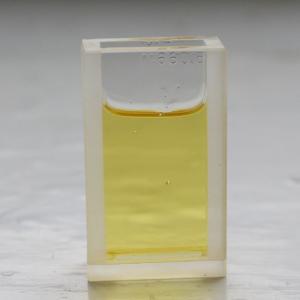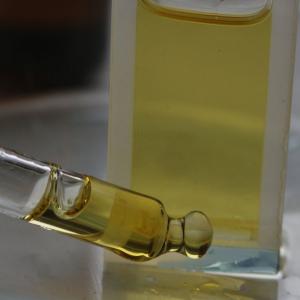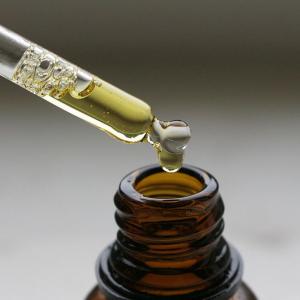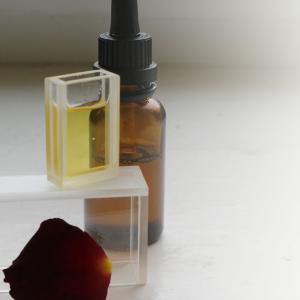
POMEGRANATE SEED OIL (PUNICA GRANATUM) - BASE OILS

BASE / GENERAL DATA
Information submited: May 14, 2015 Modified: May 9, 2018 By: OperaDreamhouse
Pomegranate (Punica Granatum) member of the family Punicaceae, are one of the most ancient edible fruits. Corresponding to 55 - 60% of the whole fruit weight, of which 75 - 85% consists of juice and 25 - 15% consists of seed.
The Pomegranate, botanical name Punica Granatum, is a fruit-bearing deciduous shrub or small tree growing between 5 and 8 m tall. A shrub or small tree growing 6 to 10 m high, the pomegranate has multiple spiny branches, and is extremely long - lived, with some specimens in France surviving for 200 years.
The edible fruit is a berry, between a Lemon and a Grapefruit in size 5 - 12 cm in diameter with a rounded shape and thick, reddish skin. The number of seeds in a Pomegranate can vary from 200 to about 1400 seeds. Each seed has a surrounding water - laden pulp. The seeds are embedded in a white, spongy, astringent membrane.
The Pomegranate is considered to have originated in the region of modern day Iran, and has been cultivated since ancient times throughout the Mediterranean region and northern India. It was introduced into Latin America and California by Spanish settlers in 1769.
The fruit a long tradition of cultivation and back to ancient times. Numerous cultures regard the Pomegranate as a symbol of fertility due to its high number of seed, ranging from 150 - 200 to up to 1000.
Today, it is widely cultivated throughout the Middle East and Caucasus region, northern Africa and tropical Africa, the Indian subcontinent, Central Asia, and the drier parts of southeast Asia.
The name pomegranate derives from medieval Latin Pōmum "Apple" and Grānātum "Seeded".
The precious golden yellow to reddish oil is carefully extracted from dried Pomegranate kernels. It takes over 200 pounds of fresh Pomegranates seeds to produce just one pound of Pomegranate seed oil.
A relatively stable oil. Pomegranate seed oil is an extremely rich and nutritious oil. This highly prized oil, which is naturally high in flavonoids and punicic acid, is remarkable for the skin and has numerous dietary benefits as well.
Chemical structure:
Pomegranate seeds yeild a drying oil which contains pucinic acid forming upto 72% of the fatty acid.
Pucinic acid is conjugated triene and and geometrical isomer of elaostearic acid. Oil possesses antibacterial properties. Pomegranate (Punica Granatum) is now well known for antioxidant properties.
Free Fatty Acids - 2,8
Peroxide Value - 3,60
Specific Gravity - 0,939
Saponification Value - 190
Fatty Acids:
Linoleic - 7,1
Oleic - 6,2
Palmitic - 3,1
Punicic - 78,0
Stearic - 2,7
The Pomegranate, botanical name Punica Granatum, is a fruit-bearing deciduous shrub or small tree growing between 5 and 8 m tall. A shrub or small tree growing 6 to 10 m high, the pomegranate has multiple spiny branches, and is extremely long - lived, with some specimens in France surviving for 200 years.
The edible fruit is a berry, between a Lemon and a Grapefruit in size 5 - 12 cm in diameter with a rounded shape and thick, reddish skin. The number of seeds in a Pomegranate can vary from 200 to about 1400 seeds. Each seed has a surrounding water - laden pulp. The seeds are embedded in a white, spongy, astringent membrane.
The Pomegranate is considered to have originated in the region of modern day Iran, and has been cultivated since ancient times throughout the Mediterranean region and northern India. It was introduced into Latin America and California by Spanish settlers in 1769.
The fruit a long tradition of cultivation and back to ancient times. Numerous cultures regard the Pomegranate as a symbol of fertility due to its high number of seed, ranging from 150 - 200 to up to 1000.
Today, it is widely cultivated throughout the Middle East and Caucasus region, northern Africa and tropical Africa, the Indian subcontinent, Central Asia, and the drier parts of southeast Asia.
The name pomegranate derives from medieval Latin Pōmum "Apple" and Grānātum "Seeded".
The precious golden yellow to reddish oil is carefully extracted from dried Pomegranate kernels. It takes over 200 pounds of fresh Pomegranates seeds to produce just one pound of Pomegranate seed oil.
A relatively stable oil. Pomegranate seed oil is an extremely rich and nutritious oil. This highly prized oil, which is naturally high in flavonoids and punicic acid, is remarkable for the skin and has numerous dietary benefits as well.
Chemical structure:
Pomegranate seeds yeild a drying oil which contains pucinic acid forming upto 72% of the fatty acid.
Pucinic acid is conjugated triene and and geometrical isomer of elaostearic acid. Oil possesses antibacterial properties. Pomegranate (Punica Granatum) is now well known for antioxidant properties.
Free Fatty Acids - 2,8
Peroxide Value - 3,60
Specific Gravity - 0,939
Saponification Value - 190
Fatty Acids:
Linoleic - 7,1
Oleic - 6,2
Palmitic - 3,1
Punicic - 78,0
Stearic - 2,7

SPIRITUAL PRACTISES DATA

MEDICINE / HEALTH DATA
Information submited: August 14, 2019 By: OperaDreamhouse
Research has shown that
Pomegranate Seed oil can have a notable effect on insulin resistance,
which is very good news for someone who is struggling with diabetes
or at high risk of developing that condition.
This oil effective for protecting the immune activity on the skin, preventing many of the airborne pathogens from taking hold on the body’s largest organ.
According to a 2017 study published in the Molecules journal, Punicic acid, the primary active ingredient in Pomegranate Seed oil, as well as conjugated Linoleic acid has anti-proliferative effects on breast cancer.
Another review article published in the Evidence-Based Complementary and Alternative Medicine stated that Pomegranate and its products have anticarcinogenic effects against prostate cancer (Punicic acid).
Pomegranate Seed oil contains a magical compound, a new essential fatty acid to know about - Punicic acid. It’s also called omega 5 and it has been found to reduce inflammation, fend off free radicals and show cancer-fighting abilities. It also helps thicken skin and improve elasticity making it useful for scarring.
This oil effective for protecting the immune activity on the skin, preventing many of the airborne pathogens from taking hold on the body’s largest organ.
According to a 2017 study published in the Molecules journal, Punicic acid, the primary active ingredient in Pomegranate Seed oil, as well as conjugated Linoleic acid has anti-proliferative effects on breast cancer.
Another review article published in the Evidence-Based Complementary and Alternative Medicine stated that Pomegranate and its products have anticarcinogenic effects against prostate cancer (Punicic acid).
Pomegranate Seed oil contains a magical compound, a new essential fatty acid to know about - Punicic acid. It’s also called omega 5 and it has been found to reduce inflammation, fend off free radicals and show cancer-fighting abilities. It also helps thicken skin and improve elasticity making it useful for scarring.

BEAUTY / COSMETICS DATA
Information submited: August 14, 2019 By: OperaDreamhouse
The antioxidant
phytochemicals and vitamins found in Pomegranate seed oil can help reduce
signs of premature aging, improve collagen formation, and neutralize
free radicals that cause oxidative stress in the skin.
Using this oil topically on the face can help to clear up signs of pimples and acne. The antibacterial and antioxidant effects of Pomegranate Seed oil can help eliminate the bacteria that causes acne and also rebalance oil levels on the skin.
It also helps unclog pores on the face to help in relieve the symptoms of acne. It also assists with unclogging scalp pores to promote hair growth.
The natural antioxidants present in Pomegranate Seed oil help to protect the skin from the harmful free radicals, aid in regulating the production of sebum and help treat hormonal imbalances in the body which consequently help in treating and preventing acne while the moisturizing effect of this nutrient-rich oil revitalizes and rejuvenates the skin to help it look smooth, soft and flawless.
Pomegranate Seed oil contains a form of Pro-estrogen, which is compatible with your natural hormones, and its hormone supporting and balancing effect has an amazing effect on skin texture.
This oil is extremely concentrated, so only a very small amount is required for the effects to be felt. The many benefits of the oil come from its high levels of Punicic acid, Vitamin C, Flavonoids, Linoleic acid, and Oleic acid, among various other active components.
This oil helps to treat skin problems like eczema, psoriasis and sunburns. Its potent healing qualities are helpful in repairing wounds, cuts, pimples, cracks and other break outs on the skin without leaving any scars or marks behind.
Using this oil topically on the face can help to clear up signs of pimples and acne. The antibacterial and antioxidant effects of Pomegranate Seed oil can help eliminate the bacteria that causes acne and also rebalance oil levels on the skin.
It also helps unclog pores on the face to help in relieve the symptoms of acne. It also assists with unclogging scalp pores to promote hair growth.
The natural antioxidants present in Pomegranate Seed oil help to protect the skin from the harmful free radicals, aid in regulating the production of sebum and help treat hormonal imbalances in the body which consequently help in treating and preventing acne while the moisturizing effect of this nutrient-rich oil revitalizes and rejuvenates the skin to help it look smooth, soft and flawless.
Pomegranate Seed oil contains a form of Pro-estrogen, which is compatible with your natural hormones, and its hormone supporting and balancing effect has an amazing effect on skin texture.
This oil is extremely concentrated, so only a very small amount is required for the effects to be felt. The many benefits of the oil come from its high levels of Punicic acid, Vitamin C, Flavonoids, Linoleic acid, and Oleic acid, among various other active components.
This oil helps to treat skin problems like eczema, psoriasis and sunburns. Its potent healing qualities are helpful in repairing wounds, cuts, pimples, cracks and other break outs on the skin without leaving any scars or marks behind.

FOOD / COOKING DATA
COMMENTS
No comments.
Newest mixtures containing Pomegranate Seed Oil (Punica Granatum):

Balm for mature skin
June 4, 2015


